Ready Player One
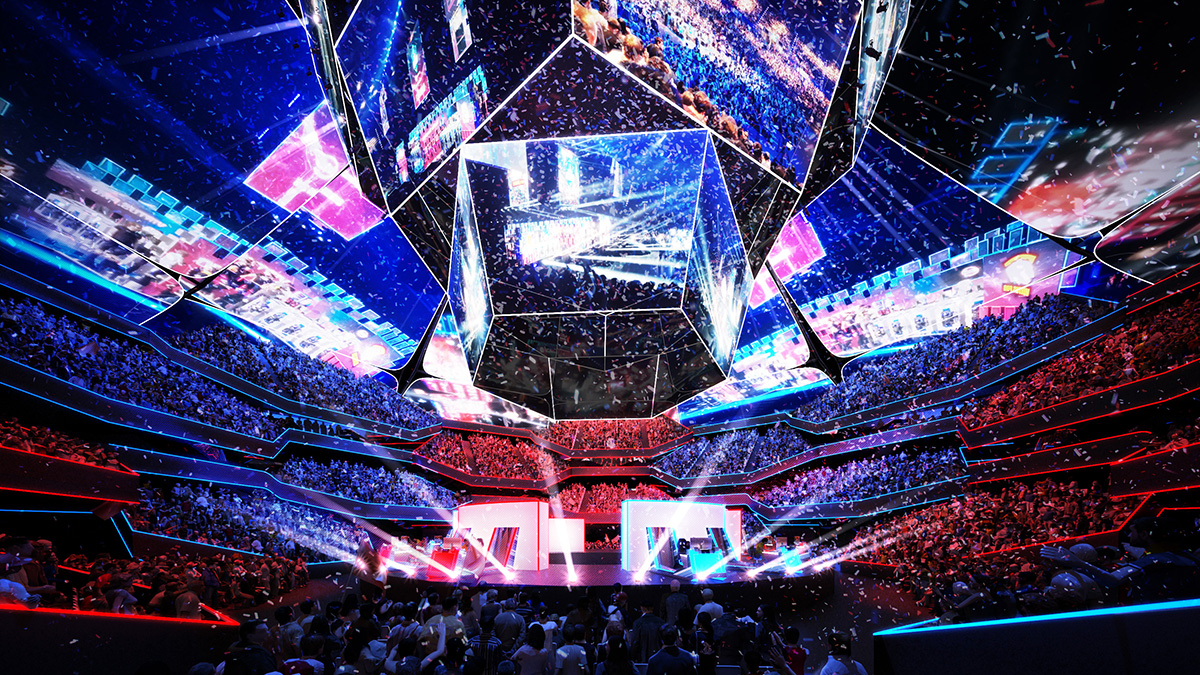 Image by HOK and SAP
Image by HOK and SAP
The immersive virtual worlds of video games can transport players into any conceivable environment and transform them into myriad creatures, machines, and characters imbued with powers and abilities that act as an extension of the players themselves.
Video games are inherently competitive. When players form teams, the games become esports, a phenomenon that is fully entrenched worldwide and growing exponentially.
Tech watchers estimate esports will near $3 billion in annual revenue in 2023, with roughly 276 million users worldwide. Nearly 80 percent of gamers are under 35, representing enormous future purchasing power.
And as with traditional sports, facilities tailor-made for game tournaments are on the boards of design studios worldwide, leveraging cutting-edge technology to produce mind-bending environmental experiences for gamers and spectators alike. Some stadiums, like the one in Arlington, Texas, already exist.
A game, sure. But a sport?
The merits of video gaming as a sport are a matter of debate. Controversy has swirled for decades about the impact of video games on the mental health and well-being of young people. Experts point to violent scenes acted out on digital battlegrounds, the sexism and oversexualization of female figures, trash talk hurled between users, privacy and security concerns, and even the physical toll of sitting hunched for hours while strained retinas track pixels in a darkened room.
Then there is the high cost of the systems themselves that makes video gaming a pastime of the privileged.
But some scholars argue that esports are as physical as traditional competitions. Hand-eye coordination, quick reaction time, mental acuity, endurance, flexibility, and muscle memory are all part of the athletics of esports.
Highly skilled players show off their moves on this growing international stage and can win significant cash through tournament play. It is no surprise that the players, like other professional athletes, develop fan followings. Perhaps one of the best-known gamers, Ninja — 32-year-old Richard Tyler Blevins from the Chicago area — has been said to earn $1 million per month in winnings, sponsorships, and endorsement deals, although reports vary.
Welcome to Hogwarts
Although the National Collegiate Athletics Association (NCAA) has declined to regulate esports, co-recreational esports teams are growing on college, university, and community college campuses. Various organizations like Tespa, which started at the University of Texas in Austin in 2012, have filled the void of the NCAA’s role in organizing and regulating college programs. They also make connections to game development companies, corporate sponsors, and computer hardware manufacturers that market their products to these student-athletes.
And just like in traditional athletics, there are academic scholarships for esports. Competition on a national and even international scale spurs universities to invest in recruiting the best video game players to their teams. Only the highest ranked and most skilled hopefuls — verified through tryouts and confirmed by experts — are offered a jersey and a spot on the team.
Once selected, members of elite university esports teams are fortunate to have both financial support from their institutions through donors as well as the ability to earn prize money in competitions. Without traditional NCAA restrictions, teams can accept corporate sponsorships and capitalize on their winnings.
College campuses are also incorporating facilities built specifically for esports for their teams. Syracuse University hired Kansas City-based Populous to design its esports hub for students. The school’s Barnes Center at the Arch offers a heavily branded retreat where student-athletes can congregate, train, and scrimmage. The setup includes furniture that can be reconfigured for various team setups. Raised access flooring offers the flexibility for power and data distribution.
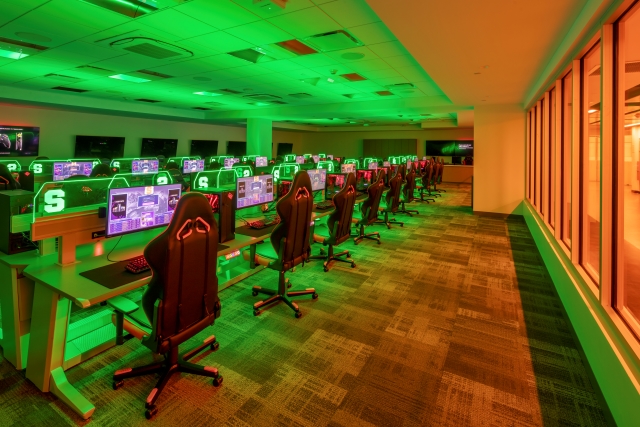
Syracuse University’s Barnes Center at the Arch, Designed by Populous
Further pushing the boundaries in facility design, Southern Methodist University’s game design program, the Guildhall, wanted to physically change the setup of its classrooms semester by semester. Gary Brubaker, program director, worked with the team at SmithGroup’s Dallas office to design a demountable wall system for the center’s space on two levels of the new Gerald J. Ford Hall for Research and Innovation.
“We call it Hogwarts,” Brubaker said of transforming the space like magic.
The ability to adapt spaces to fit the pedagogy is a key selling point that Brubaker expects to put the school on par with peer institutions that have invested heavily in game design programs.
Caleb Wang, on the University of Texas at Dallas esports team, puts UTD on par with many peer institutions. But the video game design major says there are some schools making an even greater investment in programs and facilities.
“A lot of them are going to start funding more esports clubs,” Wang said. “While UT Dallas is ahead of a good portion of the game, there are still colleges that have taken it even one step further with huge gaming facilities made for each type of game.”
Wang cited the University of California, Irvine and Maryville University in St. Louis, Mo., as exemplary not only for their expansive esports facilities, but also for their high rankings in game play. Both universities, Wang said, offer significant scholarships – up to a full ride – to video gaming student-athletes.
Step in to the Arena
Outside of higher education, esports attract tremendous attention from players and fans alike — enough to fill a stadium.
As with traditional athletics, high net worth individuals and corporations are eager to own and market professional video gaming teams. Dallas is home to several major clubs, including the Dallas Fuel, which specializes in the game Overwatch, and the Dallas Empire, focusing on Call of Duty. Both teams are owned by Envy Gaming, a Dallas esports organization lauded for its record of wins in video game leagues and now involved in Esports Stadium Arlington.
The business case is based on the significant money, as much as $100 million, that teams can win in tournaments — enough to catch investors’ attention. Envy Gaming attracted Dallas native and former energy executive Kenneth Hersh and his Hersh Interactive Group as a strategic investment partner. (In addition to running his family investment fund, Hersh also serves as president and CEO of the George W. Bush Presidential Center on the SMU campus in Dallas.) Well-known brands have also affiliated with Envy Gaming’s teams, including tech companies Acer, Samsung, and Frontier Communications.
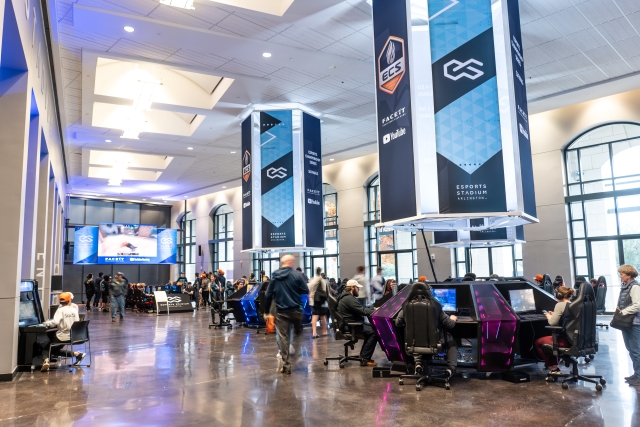
Esports Stadium Arlington, Designed by Populous
With Esports Stadium Arlington, Dallas-Fort Worth boasts what is reported to be the largest esports venue in the nation. The $10 million public-private partnership is between the City of Arlington and Envy Gaming, which recently took over from a previous investor. Arlington carved out space for the stadium from its convention center, creating a dual-purpose building separated by a large corridor.
Designed by Populous and opened in 2018, the stadium portion encompasses 100,000 square feet, including a 2,500-seat spectator bowl, concessions, and on-site recreational gaming. Unique to the esports facility is its state-of-the-art data center and a full multimedia production studio that develops the content for the massive screens displaying game play throughout the stadium.
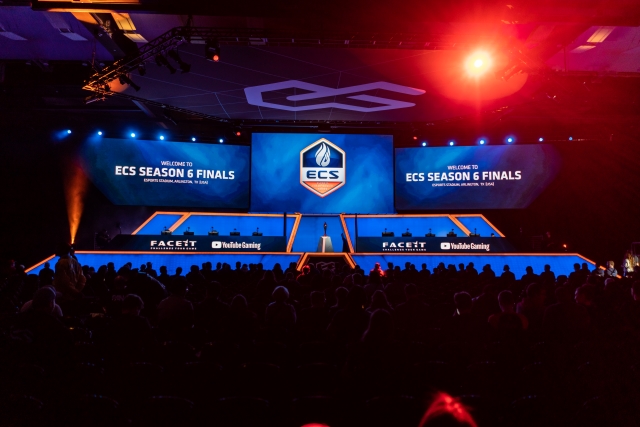
Esports Stadium Arlington, Designed by Populous
Brian Mirakian, a senior principal with Populous who has designed pro football, baseball, basketball, and Olympic venues, said esports projects are more like traditional sporting arenas than not. The biggest difference is what attendees want to see and where they want to sit, he said.
Although huge screens have made their way to pro sports stadiums across the globe, he said, spectators’ focus is still on the physical field of play, with seats close to the action in highest demand. But esports venues rely on screens to showcase the players’ progress. To that end, fans prefer spots higher in the bowl to get a wider view of the expansive projection-based media, he said.
Mirakian’s team also worked on Fusion Arena, a 3,500-seat, $50 million esports venue planned in Philadelphia. That project, billed as the first new-construction, purpose-built esports arena in the Western Hemisphere, has been left on hold since the COVID-19 pandemic struck.
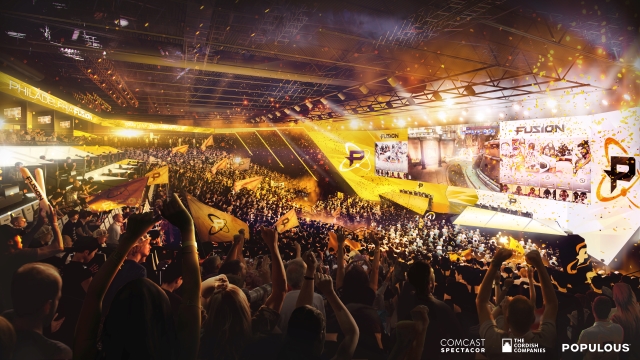
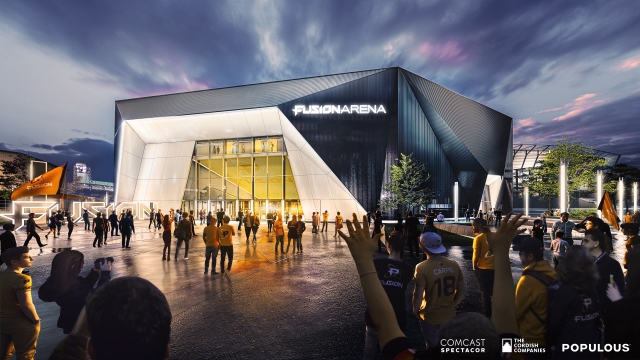
Fusion Arena